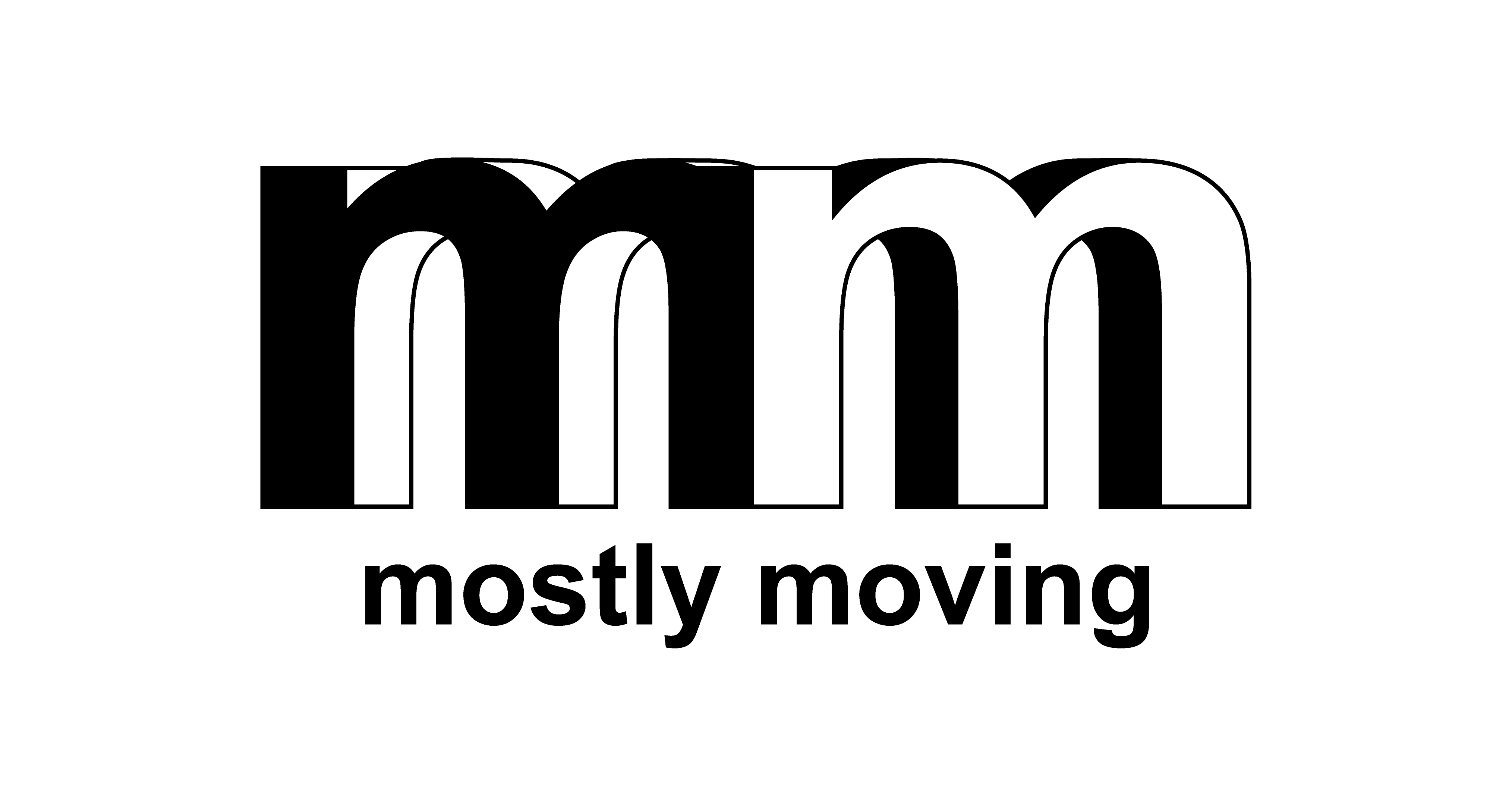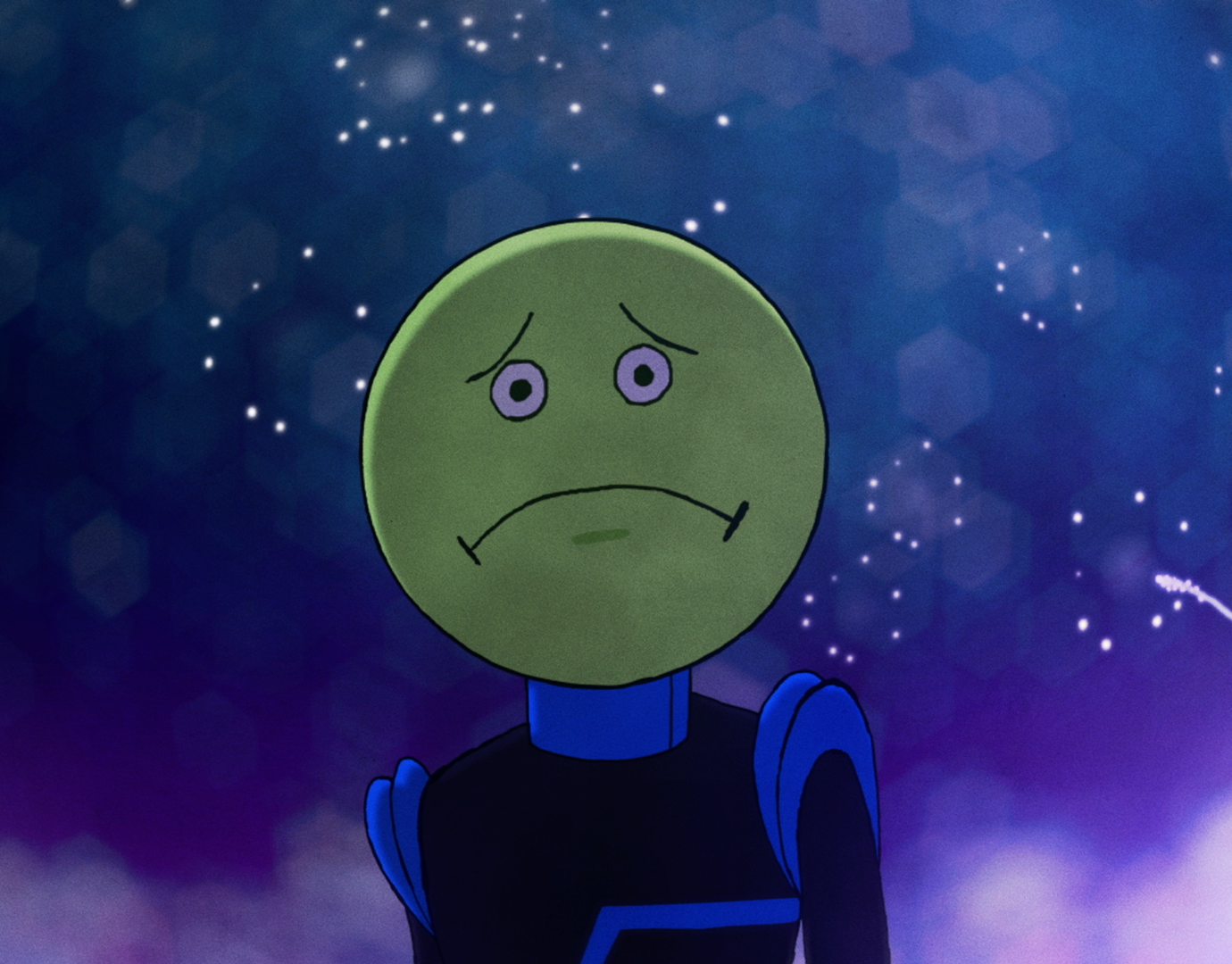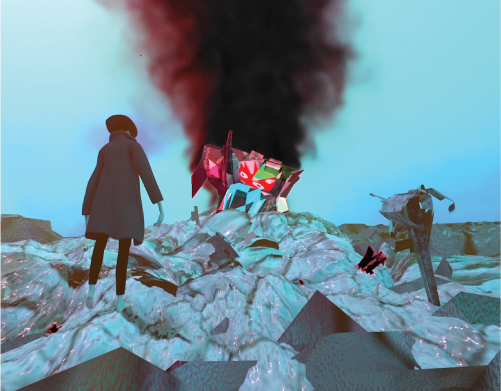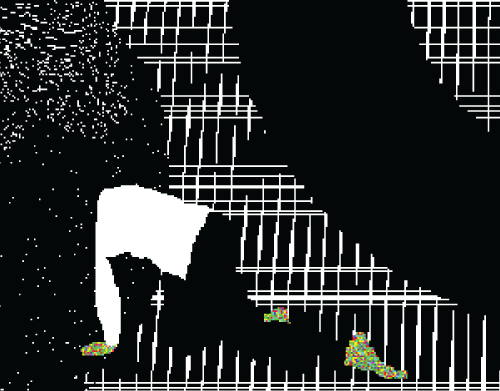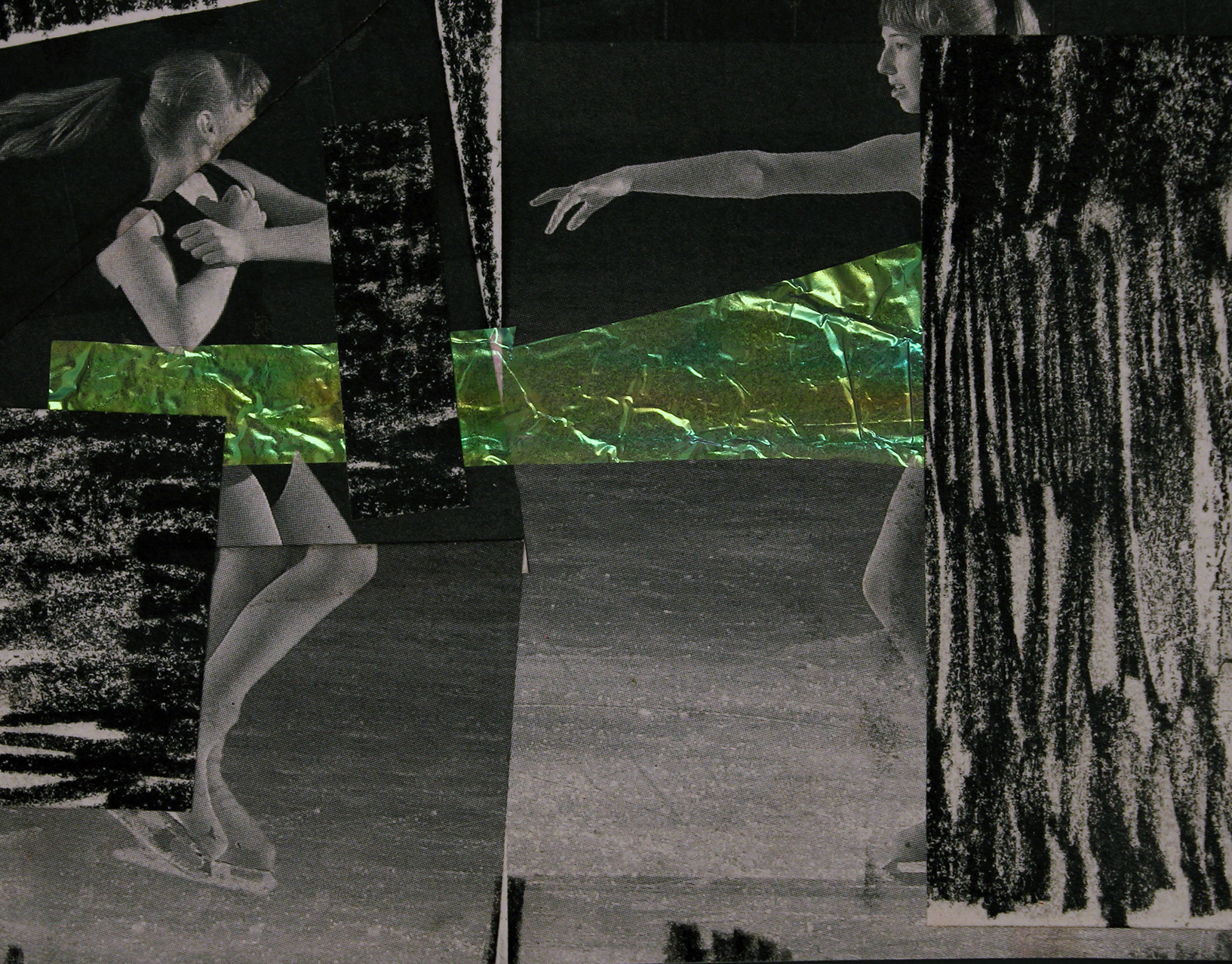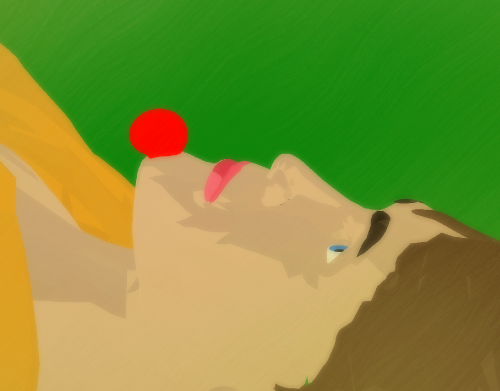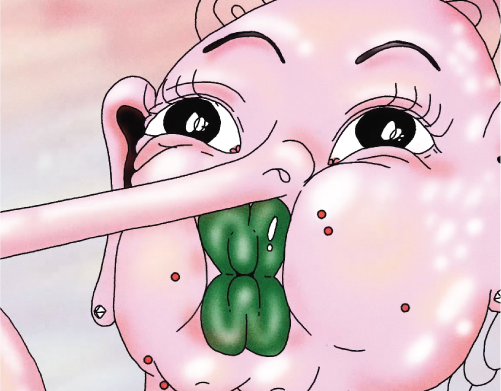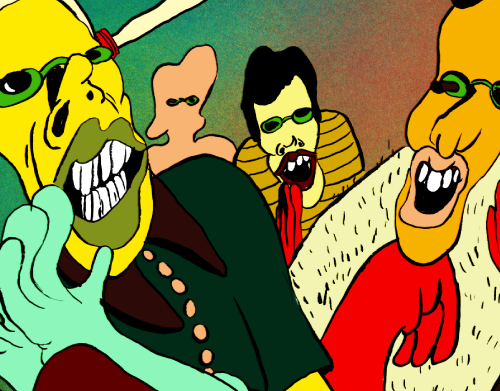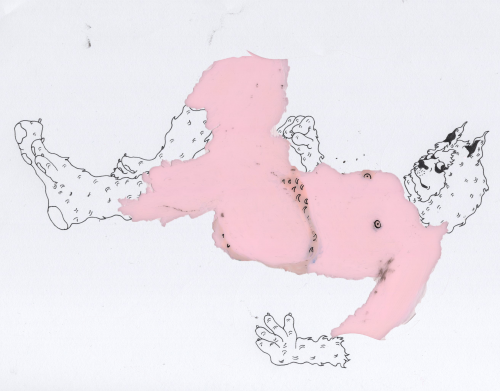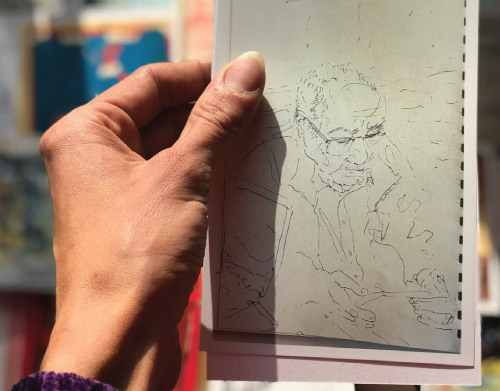Interview with Caleb Wood
From MM03, released July 2019
From MM03, released July 2019
----
Caleb Wood is a moving image artist working in the United States. He is ruled by two things: nature, and movement. His animation covers many techniques and approaches, but all of them seem focused on these two elements. A third quality might be experimentation, but that comes from exploring the first two. His work pays homage to classic experimental animators like Bruce Bickford and Adam Beckett while also, for the better part of a decade, being ahead of the curve visually and with technique. Despite what he’s working on at any given moment, it’s almost certain that it’ll be done in a way that pushes the medium in new directions. Whether that means creating mind-bending hand-drawn loops, sequencing bird feces, organizing online group animation experiments, or creating gallery installations that double as short films, it’s clear that Caleb is one of the most exciting animation artists working today. Since graduating from RISD in 2011, his short films have screened around the world at top film festivals as well as garnering high praise online. He’s part of the animation collective Late Night Work Club and has a Patreon going for his personal work.
Caleb Wood is a moving image artist working in the United States. He is ruled by two things: nature, and movement. His animation covers many techniques and approaches, but all of them seem focused on these two elements. A third quality might be experimentation, but that comes from exploring the first two. His work pays homage to classic experimental animators like Bruce Bickford and Adam Beckett while also, for the better part of a decade, being ahead of the curve visually and with technique. Despite what he’s working on at any given moment, it’s almost certain that it’ll be done in a way that pushes the medium in new directions. Whether that means creating mind-bending hand-drawn loops, sequencing bird feces, organizing online group animation experiments, or creating gallery installations that double as short films, it’s clear that Caleb is one of the most exciting animation artists working today. Since graduating from RISD in 2011, his short films have screened around the world at top film festivals as well as garnering high praise online. He’s part of the animation collective Late Night Work Club and has a Patreon going for his personal work.
----
Mostly Moving: Hi Caleb. Can you start by telling me a bit about yourself and how you got started making animation?
Caleb Wood: Hey MM. I’m a pretty basic midwestern American gamer nerd, combined with a multidisciplinary fine artist, with a focus on animation. I have a lot of different interests that should conflict with each other but somehow culminate into an enhanced experience. I grew up in a lot of different places, went to lots of different schools, and kept having to find those groups where I’d fit in along the way. I was always the quiet new kid who could draw dragons, monsters, pokemon, etc. I watched my oldest brother’s subbed Evangelion on VHS when I was 11, it was depressing. I started getting interested in making animation when I was in highschool, before that I was an avid consumer of it through films and shows, as well as games. I figured out how to animate back in 2005/6, and since then have been continually trying to learn more about it.
MM: Experimenting both conceptually and aesthetically seem to be at the root of your practice. Is it important for you to constantly try something new with the medium?
CW: Sometimes I feel like I don’t want to have a very clear identity in my work. I like to mix things up and be a little detached. I don’t want someone to expect anything specific when I finish a new piece. I’d like the work to just do its own thing independently from whatever else preceded it. This way of thinking often leads me to try out disparate ways of approaching a project. I think it is important to keep that window of possibilities wide open, trying new things, you generally tend to grow more and advance technically and conceptually.
gif by Caleb Wood
MM: It feels like there was a turning point in your work where you started to focus more on technical and formal experiments. (i.e. Auto Play, Bird Shit, Worm) Was there something that sparked this change for you?
CW: I think once I was out of school, I started figuring out my own voice. Once you start making work alone, outside of a community, you tend to analyze yourself in a way that allows you to amplify what really interests you about artmaking. I wanted to keep making short films on my own, and just immediately started making new works and trying not to stop. I sort of created my own echo chamber where my ideas developed. I found that making short films was doable, and began to realize my own production formula. I like to do something simple over and over, and then have that grow into some complexity and be the film. So I start with some basic vision or hypothesis and chase after it for a while, and then once I’ve generated a bunch of material I compose the finished film. I have very little interest in expressing narrative in my work, it’s not something that I think is important for what I feel like I need to share. Generally, all I care about is movement and creating a sensation for the viewers.
MM: Nothing stays still for very long in your animations, either the subject, camera or both are in motion. Is this essential to you for animation?
CW: I used to be very aware of this, always adding boil frames to every element of a film. We all come to animation with our own intuitive traits and instinctual choices. I have this weird twitch in my head where I can’t let things sit still on the screen. I’m not sure if there was ever any real reasoning to it, it was just something that i had to do. I have to make sure that everything is activated and alive. I don’t notice it as much anymore, maybe i’ve just gotten so use it that i stopped questioning the choice. Although, I have thought about confronting the urge. Sometimes I fantasize about making a film where everything is completely still.
MM: Cycles and loops appear in a lot of your films. Can you talk about your interest in them?
CW: Loops are the most efficient type of animation in my book. You can really dump in hours and hours of work time into them, and they only get better. The best part is that your not counting frames and seconds as you go, there is no shot list with goals that you're aiming for, you just focus on the task at hand and keep adding more and more. It's like knitting or weaving, where a small effort repeated countless times becomes a culmination. It’s also much more in line with working on a single composition, like painting or drawing. You can really watch the art grow and develop as you go. The audience can sit with it for as long as they want as well, more like a gallery experience where you, the viewer, choose how long you look at an artwork on the wall, not the artist.
MM: You’ve made work that functions both as static visual art and moving image films. Is this a direction you see yourself exploring more?
CW: Definitely, I’m really tired of non-tangible digital films being the final product of animation. It’s not very lucrative or exciting. I’m trying to switch tracks and make the source of the animation the product, and the resulting film just a byproduct. So using other forms of artmaking like ceramics, painting, printmaking, to generate animated sequences is one of the areas of focus where my interests have branched to.
MM: You’ve been making and sharing animation online for about a decade. Do you think the current platforms for sharing animation are sustainable for the future?
CW: It’s sort of a discussion point that branches off in a million directions. Do we keep watching media on screens, do we all wear a neural-net in our head that enhances augmented reality, can ideas be shared telepathically, etc. My initial assumption is that the way we consume media in the future will be drastically different than it is now. So will the way we create. It’s hard to imagine what platforms like youtube or Vimeo will morph and evolve into as technology advances. Ideally, I’d like to see a new type of platform come around. Something crowdsourced and organic, partitioned between every user.
MM: The majority of your films seem to be in conversation with flora and fauna in some way. Is nature a primary source of inspiration for you?
CW: Yeah, I have this whole theory on how ideas are generated from observation of matter. Plants and animals are really powerful forms, and for me personally, are the best aspect of life. Everything you need to know can be observed from them.
MM: What’s next for you, and are you currently working on anything new?
CW: Well, I’m chasing a teaching career on the east coast and still making animations. A couple of bigger projects in the works to look out for down the road as well. All in all still staying productive.
----
----
----
If you enjoyed this interview, please consider purchasing a physical copy.
Your support keeps the magazine running, thank you.
Your support keeps the magazine running, thank you.
© Mostly Moving 2020
